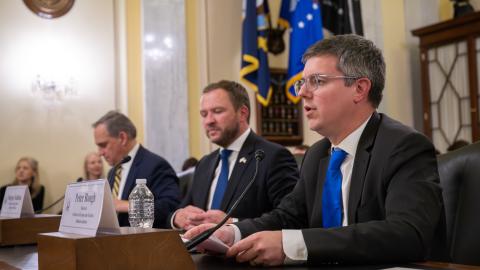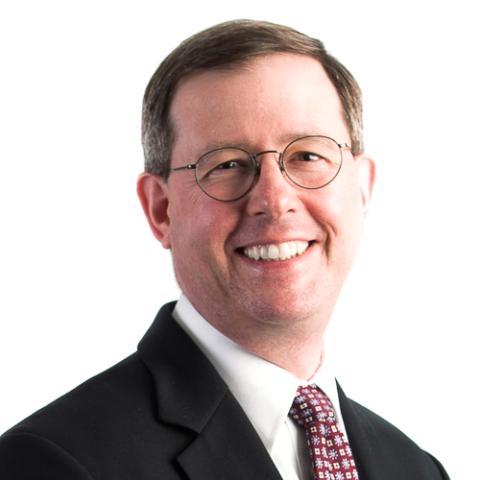Canadians often grumble about the outsized influence of Quebec in national politics. The province doesn't even make up a quarter of the country's population anymore, and yet it seems able to determine the limits of what governments in Ottawa can do on everything, from taxes and spending, to Canadian involvement in Afghanistan, and even Canadas position on global warming. Americans frequently are told that Canada cannot be more helpful on a particular issue, because of Quebec.
The Conservative minority government of Prime Minister Stephen Harper made several direct appeals to Quebec voters in its Throne Speech that officially opened a new session of parliament on Tuesday, October 16. Twenty years ago, in November 1987, Harper spoke to the founding convention of the Reform party of Canada in Winnipeg as one of the many western Canadian conservatives who resented then-Prime Minister Brian Mulroneys doting attention to Quebec public opinion.
Today, Harper leads a party that is the result of a merger between the Reform party and Mulroneys Progressive Conservatives, and he, like Mulroney, is paying close attention to Quebec voters. Why? Because there is growing evidence that Quebec is changing in ways that augur well for Harper and perhaps for conservatism across Canada.
On September 17 three by-elections took place in Quebec to fill vacant seats in the federal Parliament for Outremont, Saint-Hyacinthe-Bagot, and Roberval-Lac-Saint-Jean. Each of these seats was won by an opposition party in the 2006 election, and so in a sense the Conservatives had nothing to lose in these races; and yet, in an important way, Harper won big.
The New Democratic party candidate defeated the Liberals in Outremont and a Conservative took Roberval-Lac-Saint-Jean from the Bloc Québécois, displacing the main fédéraliste and indépendentiste parties in Quebec who have dominated the provinces federal representation in the 15 years since the last Conservative to serve as Canadas Prime Minister, Brian Mulroney, was in office. Only in Saint-Hyacinthe-Bagot did the Bloc Québécois hold its seat, and there the Conservative challenger made a strong showing and raised hopes that in the next election, the seat might change hands.
The outcomes of Mondays by-elections, added to the results of the April provincial election in Quebec and the January 2006 federal election that brought Harper to power with eight Conservative M.P.s from Quebec, are encouraging signs that Quebec politics may be undergoing a historic shift --one that may change the way that Americans see Canada, and the future politics of U.S.-Canada relations.
A Battle for the Soul of Quebec
The Quebec most Americans have seen since the 1960s has been modern, secular, and French--or French Canadian. But it was not always this way. From the British Conquest in 1763 (achieved with an army recruited from the 13 colonies to the south) until the middle of the 20th century, Quebec was arguably the most conservative part of Canada; socially, economically, and politically. Quebec nationalism was conservative as well, dedicated to preserving the French fact across Canada and especially in Quebec.
That started to change with the death of Quebecs conservative, nationalist premier, Maurice Duplessis in 1959. A young generation of progressives subsequently emerged that hoped to modernize Quebec society--by which they meant, among other things, to loosen the grip of the Catholic Church.
They called it La Révolution Tranquille or the Quiet Revolution; Quebecs progressives were successful in peacefully and incrementally replacing the Church with the provincial state.
That success gave way to a split between those modernizers who saw the logical end of their campaign as independence for Quebec (indépendantistes), and those who hope to take the campaign of secular statism to Ottawa, and refashion Canada itself (fédéralistes). As progressives, neither side would join a conservative party. The indépendantistes formed the Parti Québécois in 1968; the fédéralistes mainly joined either the federal or the provincial branch of the Liberal party.
This debate among the self-styled Quiet Revolutionaries was itself a quiet one until a small group of indépendantistes inspired by the anti-colonial movements in Algeria and elsewhere opted for terrorism: the Front de Libération du Québec(FLQ) escalated quickly from bombing mailboxes, to kidnapping the provincial Minister of Labor and the British Consul general in Montreal.
Canadian Prime Minister Pierre Trudeau, a left-wing fédéraliste who joined the Liberals in Ottawa and became prime minister in 1968, responded to the FLQ crisis by declaring martial law in Montreal, and sending in federal troops. The FLQ was crushed, but the moderate indépendantistes regrouped under the banner of the Parti Québécois and won the 1976 provincial election. The new indépendantiste government in Quebec City scheduled a referendum on separation from Canada in 1980 that they lost. Sixty percent of Quebec voters, showing a very conservative suspicion of radical change, chose the status quo, in part because Trudeau promised them reform if they stayed in Canada.
Trudeau launched talks with all ten provinces on revising the British North America Act of 1867, the British legislation that served as Canadas constitution, and adopting it as Canadian legislation. The result was the 1982 Canadian Constitution which was ratified by the federal parliament and most provincial legislatures--but not Quebecs, which was still in the hands of the indépendantistes of the Parti Québécois.
A Quebec Conservative in Ottawa
In 1984, Canadians elected a Progressive Conservative federal government led by another Quebecker, Brian Mulroney. Mulroney won the election by linking free market conservatives in the West and conservative nationalists in Quebec, while winning enough Ontario support to hold the two sides together. With strong majorities in parliament behind him, Mulroney embarked on an ambitious program of tax reform (including a national value-added sales tax) and free trade with the United States--both big gambles for a Canadian politician.
Mulroney succeeded on both fronts, guaranteeing himself a place in Canadian history books. But as a conservative who was drawn to support the fédéralistes in the political fight that divided his home province, Mulroney had more difficulty when he tried to amend the constitution to satisfy Quebec concerns. Twice Mulroney tried to fashion a package of amendments that Quebec and the rest of Canada would accept. Trudeau came out of retirement to attack Mulroneys efforts, known as the Meech Lake Accords and the Charlottetown Accords, and they both went down to defeat.
The collapse of Mulroneys constitutional reforms caused a conservative crack-up across Canada. Disgruntled western conservative Members of parliament, as angry about the new sales tax as they were about Mulroneys catering to Quebec, fueled a parliamentary revolt and formed the Reform party, with its MPs sitting in opposition to the government. Then disappointed conservative nationalist MPs from Quebec abandoned the Progressive Conservative caucus as well to form the Bloc Québécois. In 1993, Canadians elected a Liberal government led by one of Trudeaus loyal allies, Jean Chrétien, as prime minister, and reduced the Progressive Conservative party of Canada from 198 MPs and a majority government to just two seats in parliament.
The split among Canadian conservatives kept Liberal governments in power in Ottawa throughout the 1990s. The Reform party became the largest opposition party, and the Bloc Québécois won a majority of the Quebec seats in the federal parliament. Ontario and Atlantic Canada continued to give modest support to the Progressive Conservatives.
Meanwhile, Quebec voters elected the indépendantistes to govern the province again led by Lucien Bouchard, a former cabinet minister in the federal government under Mulroney. Bouchard called a second referendum on separation in 1995. Prime Minister Chrétien fought to keep Quebec in Canada, as his mentor, Trudeau, once did. Once again, the modernizers of Quebec were joined in battle over the future of the province. The status quo won again this time, but narrowly: 50.4-percent of voters opted to remain in Canada, while 49.6-percent backed Bouchard's plan for independence.
After the 1995 referendum, the leader of the federal Progressive Conservatives, a Quebecker named Jean Charest who had served in the Mulroney cabinet alongside Bouchard, abandoned Ottawa to lead the provincial Liberals in opposition to the indépendantistes. Bouchard quit politics, and his party was eventually defeated by Charest.
Quebec Premier Charest and the fédéraliste Liberals proved unpopular in their first mandate, and barely hung on for re-election in March of this year. To the surprise of many observers, the largest opposition party in Quebec City was not the indépendentiste Parti Québécois, but a new conservative nationalist party Action Démocratique du Québec (ADQ) whose young leader--a generation younger than the modernizers--echoes the positions of Maurice Duplessis, albeit without any desire to restore the Catholic Church to its former prominence.
Harpers Quebec Strategy
Stephen Harper is Canadas prime minister today in large part because he was able to successfully reunite the free market conservatives of the old Reform party, with the remnants of Mulroney's Progressive Conservative Party. Under the banner of the Conservative Party of Canada(having dropped the adjective Progressive from the name), Harper won a narrow victory and formed a minority government with a plurality (but not an outright majority) of seats in the House of Commons in January 2006. In that election, Quebec voters delivered up another surprise that proved decisive: eight new Conservative MPs from Quebec, where the Conservative Party had been virtually shut out since the days of the Mulroney governments in the 1980s.
The Quebec election in March marked a resurgence of conservative nationalism in Quebec; some voted for the ADQ, others voted for Charest's Liberals, but combined these two parties won 80-percent support for free-market economic programs, conservative social values, and keeping Quebec in Canada. Charest heads the first minority government in Quebec City since 1876, but with ADQ support the rump caucus of the indépendantiste Parti Québécois poses little threat.
Harper, by bringing conservative nationalists in Quebec into the Conservative party of Canada, could heal the split among Canadian conservatives and win the first Conservative majority government since Mulroneys. And Harper would become the first prime minister from western Canada to win a majority government since John Diefenbaker, who first managed this feat in 1957 with the help of Maurice Duplessis.
If that happens, Quebeckers and conservatives in Canada will have come full circle. Canada may once again become a majority conservative country, with Quebec and Alberta as conservative bastions in the east and west. This would be good news for the United States, since a conservative Canada will be a more stalwart friend on everything from the War on Terrorism to the future management of North American integration to improve competitiveness while preserving national sovereignty.
The by-elections in Quebec were followed by a Speech from the Throne on October 16 that laid out the Harper governments plans for the rest of its current mandate. Harper set forth a bold vision, confident that the country may be ready to elect a Conservative majority government.
Americans benefited tremendously from good relations with Canada during the Mulroney years. Today, with the threats of global terrorism and rising economic protectionism looming, many in Washington long for a government in Ottawa that can provide stalwart support in the years, and trials, ahead. Harper has been a good friend to Americans, but his minority position in parliament limits what he can do.
Will Harper improve his position in the next federal election? As goes Quebec, so goes Canada.













